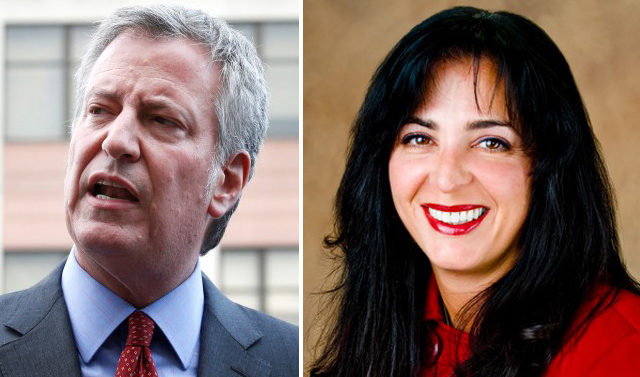It’s tempting to dismiss Mayor de Blasio’s offering tepid support for congestion pricing so long as there are toll exemptions for the poor and elderly as the sputterings of a rank hypocrite. After all, this is the same mayor who has botched the rollout of Fair Fares and who looks away as thugs in NYPD uniforms attack hard-pressed immigrant delivery-bicyclists.
We could also point to the 2017 report from the Community Service Society that delivered the indelible finding that for each member of the working poor who will face a congestion toll daily, 38 poor people will benefit from better transit paid for by the congestion tolls. Case closed, one could say.
But neither of those arguments would quite respond to Sen. Diane Savino, whose 23rd District “transit-starved residents lack the luxury of a one-seat ride via public transportation,” as she pointed out during the mayor’s appearance yesterday in Albany.
Savino’s constituents and those in other underserved parts of all five boroughs deserve more than glib answers on congestion pricing’s incidence. After all, those billion or more a year in toll revenues that have us transit advocates salivating must come from somewhere. And most of it won’t come from millionaires living in Connecticut. New York City residents will pony up around two-thirds (the precise share varies depending on toll levels and whether the figures count surcharges on taxis and Ubers).
Nor is it sufficient to point out that for most daily commuters, the tolls will be dwarfed by the costs of car ownership and use including parking. A lot of habitual drivers into Manhattan’s Central Business District have their parking, uh, carded. And don’t overlook status quo bias, which leads us humans to calibrate equity in terms of deviation from current conditions rather than overall fairness. Citing pricey parking or $200 theatre tickets only makes prospective congestion toll-payers feel more targeted.
Here, then, are ways to think about, and push back against, appeals for carve-outs from the congestion tolls, whether they come from a posturing executive or a thoughtful legislator:
- Carve-outs are a Trojan horse. Not only are “broad exemptions beyond [the] disabled a recipe for corruption,” as NY Post columnist Nicole Gelinas tweeted on Monday. They’ll cut into the net revenue available for transit by shrinking the number of tolled trips and adding new administrative costs to tolling’s deadweight loss.
- Carve-outs undermine the fairness of congestion pricing. Despite getting little ink these days, congestion pricing is still rooted in the need to make would-be drivers cognizant of their trips’ congestion-causation. Except in the wee hours, every minute that a motor vehicle is occupying space in the CBD steals two or more minutes from the “commons” of other vehicle users. Exemptions blur that signal with the confounding message: Your congestion-causation matters, but not mine.
- Some of the transit gaps in long-neglected communities will be filled by fully funding NYC Transit chief Andy Byford’s Fast Forward plan, which includes a citywide redesign of the bus network with more-efficient routes and more-frequent service.
- Nevertheless, even Fast Forward may not cover all of the gaps. That points to the need to fill remaining holes with the Transit Gap Investment Fund that Alex Matthiessen has championed for years since spearheading Move NY. And that in turn points to the need to hold the line against carve-outs, since every exemption takes away revenue needed for MTA funding.
- Assuming congestion pricing is included in the April 1 budget, with a start date of January 1, 2021, car commuters will have 21 months to work out alternative commute plans to blunt the toll bite. It’s worth bearing in mind transportation analyst Bruce Schaller’s singular finding from 2006 (in "Necessity or Choice? Why People Drive in Manhattan") that municipal workers solo-drive to the CBD twice as much as their neighbors who work in the same zip code. It shouldn’t take long before apps show up that can pair or triple up those commuters, dropping their daily toll costs by half or more.
The sixth and last pushback may be the hardest, but it’s also the most basic. New York is an opportunity city, an immigrant city, an expanding city, with 1.3 million more people in 2017 (8,622,000) than in 1990 (7,322,000). The jobs boom that drove this growth rested on improved public transportation, as Gelinas pointed out last year in her underappreciated report, "New York’s Economic Future Rides on Its Subways."
The city won’t sustain this performance while its streets are choking and its trains are failing. Congestion pricing isn’t the only change we’ll need to fix our roads and transit. But it’s hard to imagine a functional transportation system and a viable city without it.






